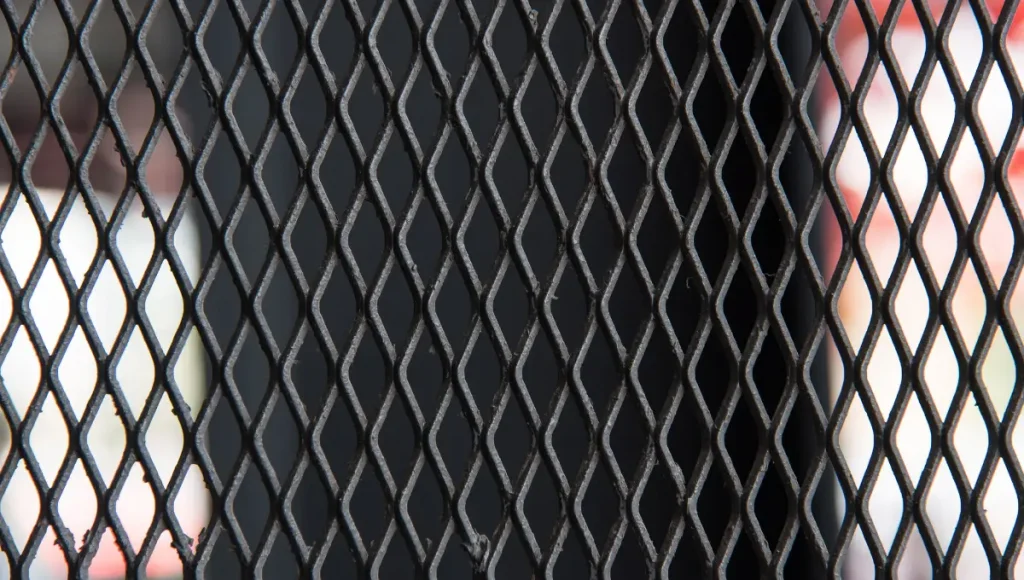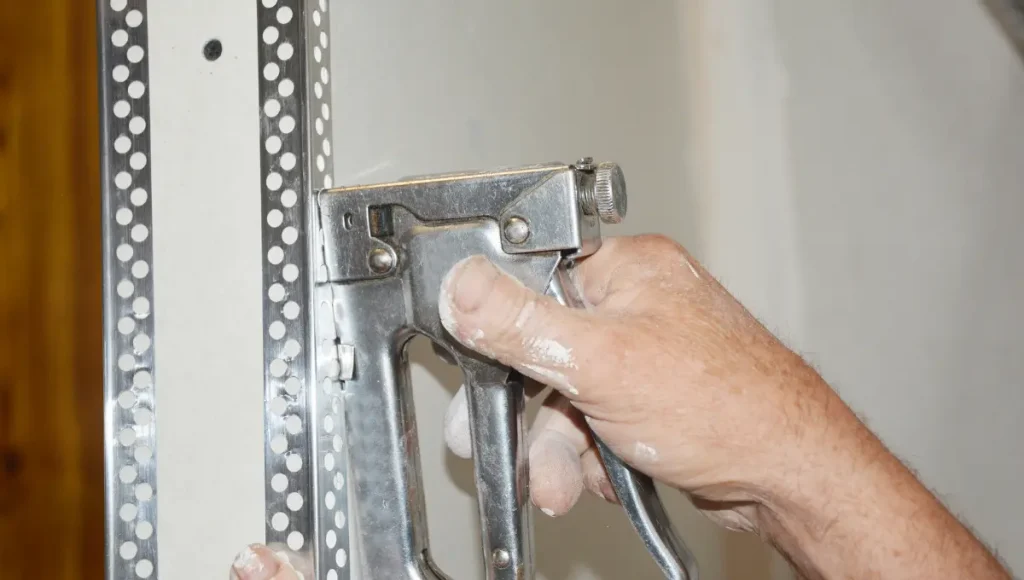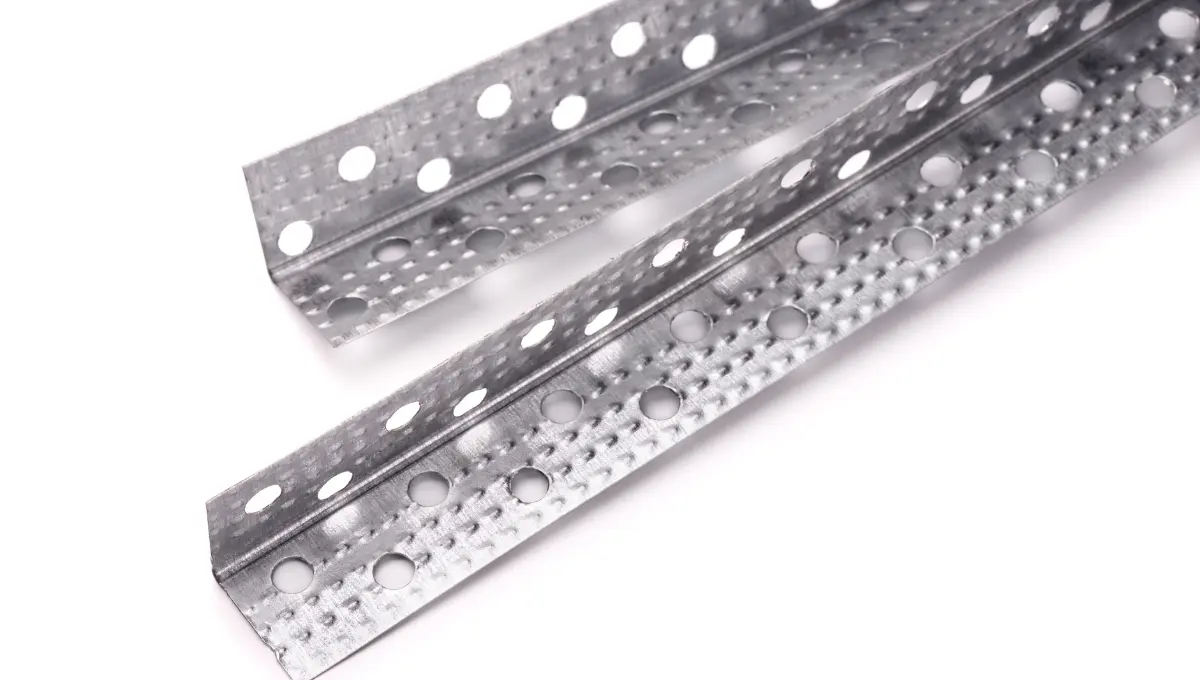In homes, beading is commonly used in interior trim and molding. For instance, the edges of wooden door frames, window frames, and baseboards often feature beading to add a decorative touch.
Beading can be a decorative element , adding it on building features makes it more aesthetic. It also plays a practical role in protecting the vulnerable areas such as corners of wall, ceilings, arches, etc.
Let’s have a look at the detailed information on what beading is in construction. and how it makesthe wall building strong.
What is beading in construction?

Beading in construction means adding a thin or rounded edge to the walls and corners of the building, which can have either a decorative or functional purpose.
Two Types of Beading
- Decorative Beading
- Functional Beading
Decorative Beading:
As we saw earlier, beading adds a touch of style to various building elements. It’s like adding curvy or thin edges. Having a thin rounded molding running along the edge of siding or trim panels, which makes it visually more good. It can be used in many parts of the house such as doors and windows, flooring, and furniture to enhance the overall aesthetic.
Applications:
Doors and Windows:
Wooden beading can frame doors and windows, giving them a polished look. For example, in traditional Indian homes, you might see carved wooden beading around the door frames, adding a classic touch. The carved beading could feature intricate patterns like floral designs or geometric shapes, which add an artistic flair to the entryway. This not only enhances the beauty of the door but also highlights the craftsmanship involved.
Flooring:
Wooden beading can be used where the floor meets the wall. It covers the gap and gives a neat finish. Imagine a beautiful wooden floor in your living room with matching wooden beading, making the room look seamless and well-finished. The beading hides any gaps between the floor and the wall, preventing dust and dirt from collecting in the small spaces. It also adds a warm, cohesive look to the room, tying the floor and walls together visually.
Furniture:
It aAdds detail to furniture like cabinets and shelves. For instance, a wooden cabinet with carved beading along the edges can turn a simple piece of furniture into an elegant one. The beading can feature subtle curves or more elaborate designs, enhancing the cabinet’s visual appeal. This is often seen in high-end furniture pieces where the added details signify quality and attention to detail.

Functional Beading:
Functional beading serves practical purposes in construction and interior design. These beading types not only enhance the aesthetic appeal but also provide essential functional benefits like sealing, protection, and support.
Applications
Furniture: Plastic edge beading on furniture like tables and desks protects the edges from chipping and damage. For example, a study table with plastic beading along the edges will be more resistant to knocks and bumps, making it last longer.
Walls: Metal edge beading is often used on corners of walls in high-traffic areas to prevent damage. In commercial buildings like offices and schools, metal beading on wall corners helps protect them from constant wear and tear, keeping the walls looking neat and tidy.
Tiles: Plastic beading around the edges of floor tiles provides protection and prevents chipping. This is particularly useful in kitchens and bathrooms where the tiles are prone to damage from heavy use and moisture.
Concrete Structures: Flexible rubber beading in concrete joints allows the material to expand and contract with temperature changes without cracking. In a large concrete driveway, rubber beading between the slabs ensures that the concrete can move slightly without causing cracks or breaks.
Building Facades: PVC beading in the joints of the exterior wall building accommodates movement due to thermal expansion. This is particularly useful in high-rise buildings where temperature changes can cause significant expansion and contraction.
Pipelines: Expansion beading in pipelines prevents damage caused by temperature-induced expansion. For example, water pipelines with rubber beading in the joints ensure that the pipes can expand and contract without leaking or breaking.
Bridges: Steel beading in bridge joints helps distribute the load and provides additional strength. In a large suspension bridge, steel beading ensures that the weight of the vehicles is evenly distributed, preventing structural failures.
Buildings: Aluminum beading in building frames adds support and stability. For example, in a high-rise building, aluminum beading in the structural framework helps support the weight of the floors and walls, ensuring the building remains stable and secure.
Roofing: Load-bearing beading in roofing structures helps support the weight of the roof tiles and prevents sagging. In a residential home, using steel beading in the roof framework ensures that the roof remains sturdy and can withstand heavy loads like snow or debris.
Types of Functional Beading
Angle beads:
L-shaped beadings are also known as Angle beads. Usually these are applied to the corners,They take the hit from bumps, scrapes, or bangs, preventing the corner itself from getting damaged or chipped.
Expansion beads:
Large areas of drywall can crack easily, especially as a building settles. Expansion beads are like tiny, hidden bridges inside the drywall. They allow the drywall to move a little without causing cracks to appear on the surface.
Parting bead:
Beading can create a clean separation between different materials like drywall and trim, it acts as a guide for the sashes ensuring they slide up and down smoothly.. It prevents windows from getting rubbing and makes them easier to use.
How does beading make the wall building strong?
Beading itself doesn’t directly impact the overall structural strength of a wall. Wall strength relies on their core building materials like bricks, concrete, or wooden studs for strength. However, beading can play a supportive role in some cases:
Indirect Protection:
Corners are vulnerable points and cracks can spread if left unchecked. Angle beads can prevent the corners and support the wall’s structural integrity.
Improved Stability:
Expansion beads used in drywall construction can contribute to a wall’s stability in a specific way. These beads allow for slight movement in the drywall due to temperature changes or settling.
This flexibility helps prevent cracks in the drywall surface, which can weaken the overall structure if extensive. However, it’s important to note that expansion beads themselves don’t directly add strength; they simply allow the existing structure to manage slight movements better.
Is beading and molding the same in construction?
Definitely not, beading and molding in construction is not the same, though they are closely related. They can sometimes be used together, and both contribute to the overall look and feel of a building.
Here’s a breakdown of the key differences:
Similarities:
- Both are used to enhance the aesthetics of a building.
- Both can be made from similar materials like wood, metal, or PVC.
- They are often applied along edges or transitions between materials.
Beading vs Molding vs Trim: Differences
| Feature | Beading | Molding | Trim |
| Size | Narrow strip | Wider than beading, can vary | Wider than beading, can vary significantly |
| Profile | Rounded profile (always) | Can be rounded, flat, or have complex shapes and details | Flat, rounded, or complex shapes and details |
| Primary Purpose | Decorative or Functional | Decorative | Decorative (primarily), some functional benefits |
| Decorative Applications | Molding with a bead profile on siding or trim panels – Decorations on doors, archways, or ceilings | Adds visual interest, definition, and a finished look | Covers gaps, creates transitions, adds visual interest, provides a finished look (baseboards, crown molding, casing, chair rails) |
| Functional Applications | Corner protection (angle beads) – Crack prevention (expansion beads) – Material separation (parting beads) | None (may indirectly protect by adding visual definition) | Can offer some protection by adding rigidity. |
| Materials | Wood, metal (galvanized steel), PVC (plastic) | Wood, plaster, MDF, PVC | Wood, MDF, PVC, plaster |
| Overall | Simple, single rounded profile – Can be used for both aesthetics and protection | More complex profiles, wider variety – Primarily for visual appeal | Wider range of decorative possibilities, more variation in size and profile |
At last, the choice between molding, trim and beading depends on the specific needs of the project. Trim offers a wider range of design options for a more decorative focus. Beading can be a great choice for balancing aesthetics and functionality with a simpler profile.
Beading in construction refers to a thin strip of material, typically made from wood, plastic, or metal, used to provide a decorative or protective finish to the edges or corners of surfaces such as walls, doors, windows, or ceilings. It is commonly used in plastering to create smooth edges, in tiling to finish off edges, and in windows and doors to secure glass panels and improve their appearance.
Measurement: Measure the area where the beading will be installed to ensure a precise fit.
Cutting: Cut the beading to the required length using a saw or cutting tool appropriate for the material.
Fixing: Attach the beading to the surface using nails, screws, or adhesive, depending on the material and the application.
Finishing: Once secured, the beading can be painted or varnished to match the surrounding surface for a seamless look.
Beading in construction is commonly made from materials such as wood, PVC (plastic), aluminum, and steel. Wooden beading is often used in traditional or decorative applications, while PVC and aluminum are popular for modern constructions due to their durability, ease of maintenance, and resistance to moisture and corrosion.

